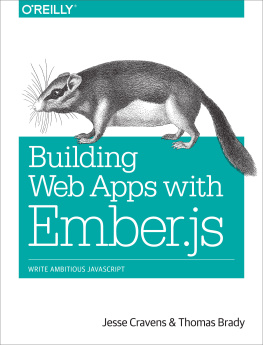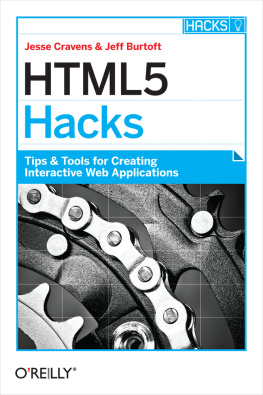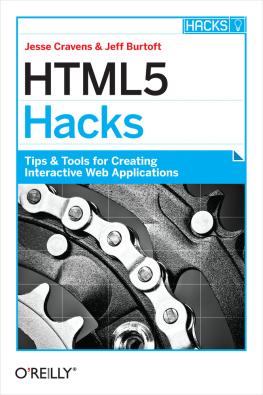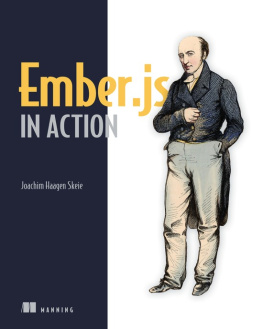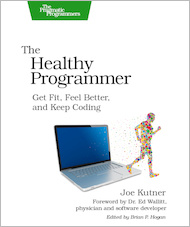Jesse Cravens - Building Web Apps with Ember.js
Here you can read online Jesse Cravens - Building Web Apps with Ember.js full text of the book (entire story) in english for free. Download pdf and epub, get meaning, cover and reviews about this ebook. year: 2014, publisher: O'Reilly Media, genre: Computer. Description of the work, (preface) as well as reviews are available. Best literature library LitArk.com created for fans of good reading and offers a wide selection of genres:
Romance novel
Science fiction
Adventure
Detective
Science
History
Home and family
Prose
Art
Politics
Computer
Non-fiction
Religion
Business
Children
Humor
Choose a favorite category and find really read worthwhile books. Enjoy immersion in the world of imagination, feel the emotions of the characters or learn something new for yourself, make an fascinating discovery.
- Book:Building Web Apps with Ember.js
- Author:
- Publisher:O'Reilly Media
- Genre:
- Year:2014
- Rating:4 / 5
- Favourites:Add to favourites
- Your mark:
- 80
- 1
- 2
- 3
- 4
- 5
Building Web Apps with Ember.js: summary, description and annotation
We offer to read an annotation, description, summary or preface (depends on what the author of the book "Building Web Apps with Ember.js" wrote himself). If you haven't found the necessary information about the book — write in the comments, we will try to find it.
Building Web Apps with Ember.js — read online for free the complete book (whole text) full work
Below is the text of the book, divided by pages. System saving the place of the last page read, allows you to conveniently read the book "Building Web Apps with Ember.js" online for free, without having to search again every time where you left off. Put a bookmark, and you can go to the page where you finished reading at any time.
Font size:
Interval:
Bookmark:
by Jesse Cravens and Thomas Q Brady
Copyright 2014 Jesse Cravens and Thomas Q Brady. All rights reserved.
Printed in the United States of America.
Published by OReilly Media, Inc. , 1005 Gravenstein Highway North, Sebastopol, CA 95472.
OReilly books may be purchased for educational, business, or sales promotional use. Online editions are also available for most titles (http://my.safaribooksonline.com). For more information, contact our corporate/institutional sales department: 800-998-9938 or corporate@oreilly.com .
- Editors: Simon St. Laurent and Brian MacDonald
- Production Editor: Kara Ebrahim
- Copyeditor: Jasmine Kwityn
- Proofreader: Amanda Kersey
- Indexer: Judy McConville
- Interior Designer: David Futato
- Cover Designer: Ellie Volckhausen
- Illustrator: Rebecca Demarest
- July 2014: First Edition
- 2014-07-07: First Release
See http://oreilly.com/catalog/errata.csp?isbn=9781449370923 for release details.
Nutshell Handbook, the Nutshell Handbook logo, and the OReilly logo are registered trademarks of OReilly Media, Inc. Building Web Apps with Ember.js, the image of a wood dormouse, and related trade dress are trademarks of OReilly Media, Inc.
Many of the designations used by manufacturers and sellers to distinguish their products are claimed as trademarks. Where those designations appear in this book, and OReilly Media, Inc., was aware of a trademark claim, the designations have been printed in caps or initial caps.
While every precaution has been taken in the preparation of this book, the publisher and authors assume no responsibility for errors or omissions, or for damages resulting from the use of the information contained herein.
978-1-449-37092-3
[LSI]
Welcome to Building Web Apps with Ember.js! This book is largely about building production-capable, browser-based appplicatons. Some might call these single-page apps while others say HTML5 apps, client MVC apps, or rich Internet apps; but in the end, these types of applications are one and the same: the web browser is the application platform, and the server provides remote service endpoints. After years of writing and using many of the solutions available to manage complex applications of this type, we have settled on Ember.js as our primary toolset. In this book, we will attempt to both teach you what we know about Ember, and, along the way, demonstrate for you why it has become our primary toolset for building web applications.
In 2005, I (Jesse) discovered JavaScript and the XMLHttpRequest object while working at a digital agency that deployed .NET and Drupal applications with rich, Flash and web frontends. At the time, JavaScript was a disrespected toy language used to sprinkle functionality onto the top of traditional web applications. Ironically, much of the JavaScript work I did then involved using flashvars to create a bridge between PHP and browser-based Flash applications.
But, at the time, Flash frontends were a necessary evil. Browsers were largely incapable of supporting rich, interactive experiences, and respectable JavaScript libraries like MooTools, YUI, and Dojo were only beginning to mature.
As I began taking additional risks by using more and more JavaScript in my applications, I started to find other like-minded developers that also believed that browsers would evolve and that JavaScript was more than just a toy language. We believed JavaScript was a full-featured, object-oriented, professional language that was capable of being used to build high-performing production applications. A strong community began to evolve, fueled largely by pioneers like Douglass Crockford, John Resig, Paul Irish, and Christian Heilmann to name a few, and eventually frontend developer became a professional job class in many organizations.
In 2007, I took my JavaScript skills to the enterprise. I was hired to begin building a complex, rich Internet application within an enterprise J2EE stack. This introduced me to many of the most common challenges presented by large-scale development: lack of JavaScript and frontend expertise, server-centric web legacy, complex cross-browser and mobile-web fragmentation compatibility requirements, and lack of provisioned desktop and development tooling for frontend developers, just to name a few. Being faced with all these limitations was some of the most challenging work of my careernot to mention overcoming the naysayers that didnt want to see the end of safe, traditional web applications.
Over the next couple of years, I focused solely on implementing and deploying a solution that was in many ways before its time. Many of the tools that are available today were nascent, or nonexistent at the time, including client MV* libraries, client-side routing and object relational mappers (ORMs), JavaScript templates, JavaScript promises, async flow control libraries, and web components. Nevertheless, my team and I dreamed up and implemented custom solutions within the parameters of the project timelines and requirements. Overall it was a success, and our client MVC framework still remains in production today.
Since 2009, I have worked on numerous applications using Backbone, Angular, and Ember. But today, I often recommend Ember.js to the clients I work with. This is primarily due to the fact that the conventions support well-known web application development patterns that I have custom written or pieced together from multiple open source libraries. Here, are the high level concepts that, in my opinion, make Ember so valuable:
Embers object model supports a classic and well understood, object-oriented pattern of class inheritance through extend, object initialization, getters and setters, and class monkey patching.
Ember models, controllers, and components extend the
Objectclass, which ensures that these objects inherit Embers powerful default data binding.The router supports complex nesting for URL-driven applications that manage application state in a conventional way that can be understood by those with web-server-routing backgrounds.
Recently, build, workflow, and testing tools in Ember have matured and become intuitive.
Embers only dependencies are on jQuery and Handlebars.js, two very well-known and documented libraries.
Finally, the community is vibrant, passionate, and extremely active.
In late 2012 and 2013, Thomas Brady and I found ourselves working on numerous ambitious web UIs in our work at frog design. Despite the nascency of the framework at the time, we felt Ember was the right tool for the job. We believed in the direction the framework was heading and in the community of talented developers behind it. At times it was frustrating, but in the end, I find myself saying all the time, Can you imagine what it would take to do this in another framework?
If you are picking up this book, we assume you have interest in building full-stack, single-page applications. In other words, we assume that you would not only like to architect and build a fully functional, browser-based application, but also connect it to a backend. That being said, this book covers all aspects of building applications with Ember. So, in addition to providing you with a complete overview of the HTML and JavaScript necessary to write on the frontend, we also include an implicit project timeline via the structure and order of the chapters, development workflow and tooling, and example backend technologies that help with getting the remotely persisted data in a format that Ember and Ember Data can easily work with.
Font size:
Interval:
Bookmark:
Similar books «Building Web Apps with Ember.js»
Look at similar books to Building Web Apps with Ember.js. We have selected literature similar in name and meaning in the hope of providing readers with more options to find new, interesting, not yet read works.
Discussion, reviews of the book Building Web Apps with Ember.js and just readers' own opinions. Leave your comments, write what you think about the work, its meaning or the main characters. Specify what exactly you liked and what you didn't like, and why you think so.

